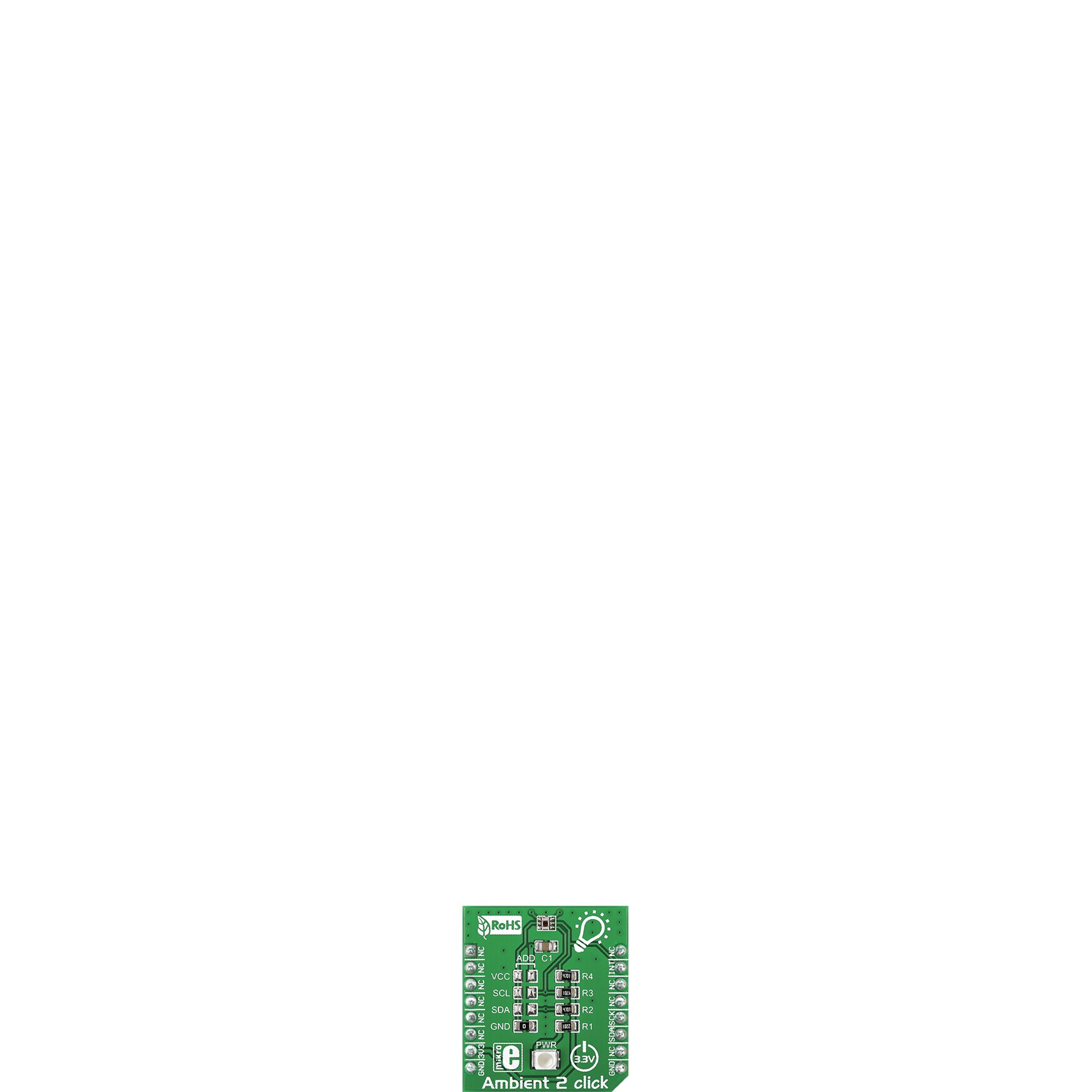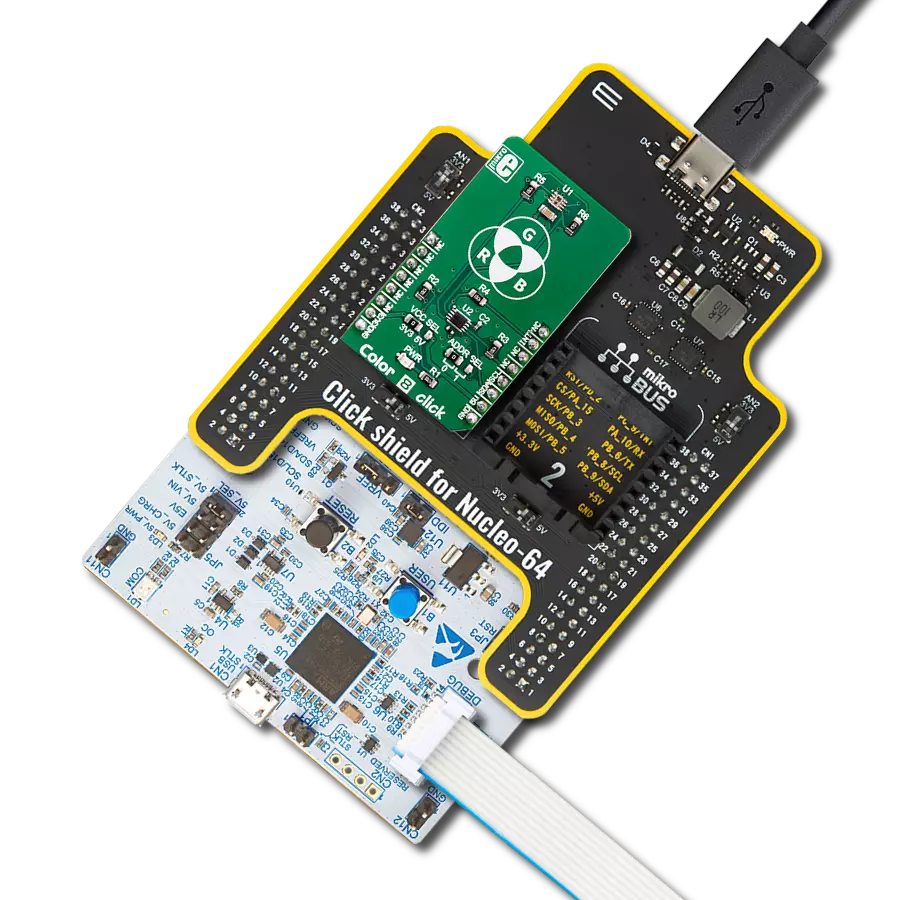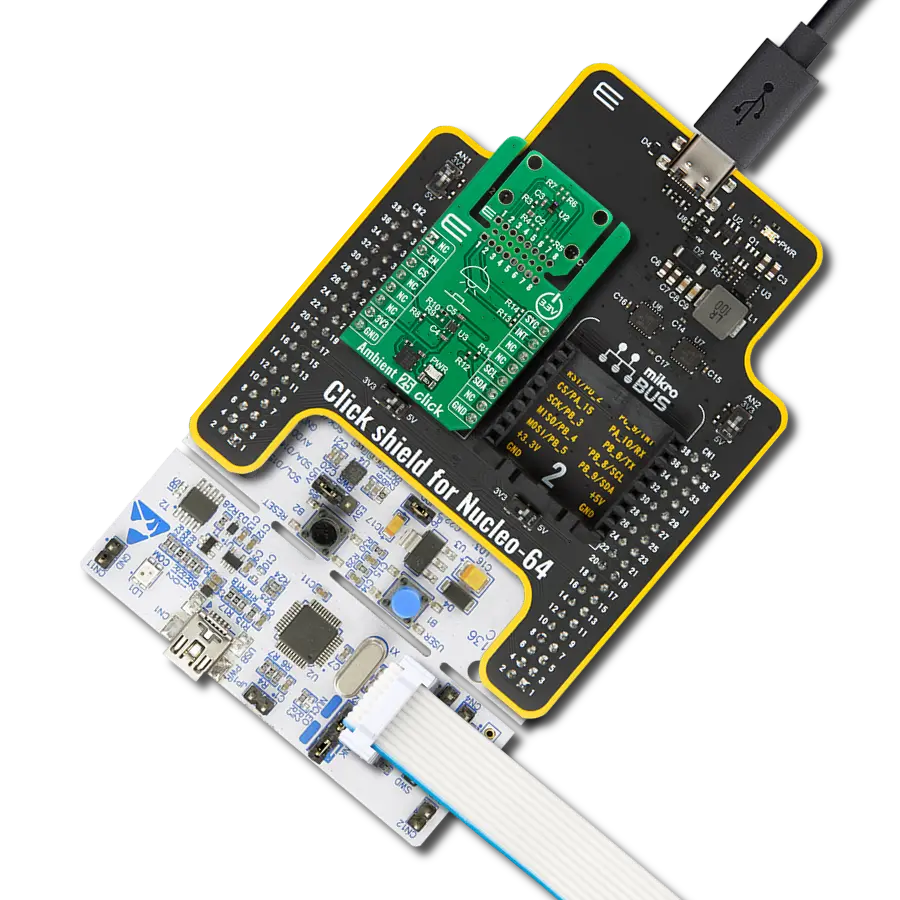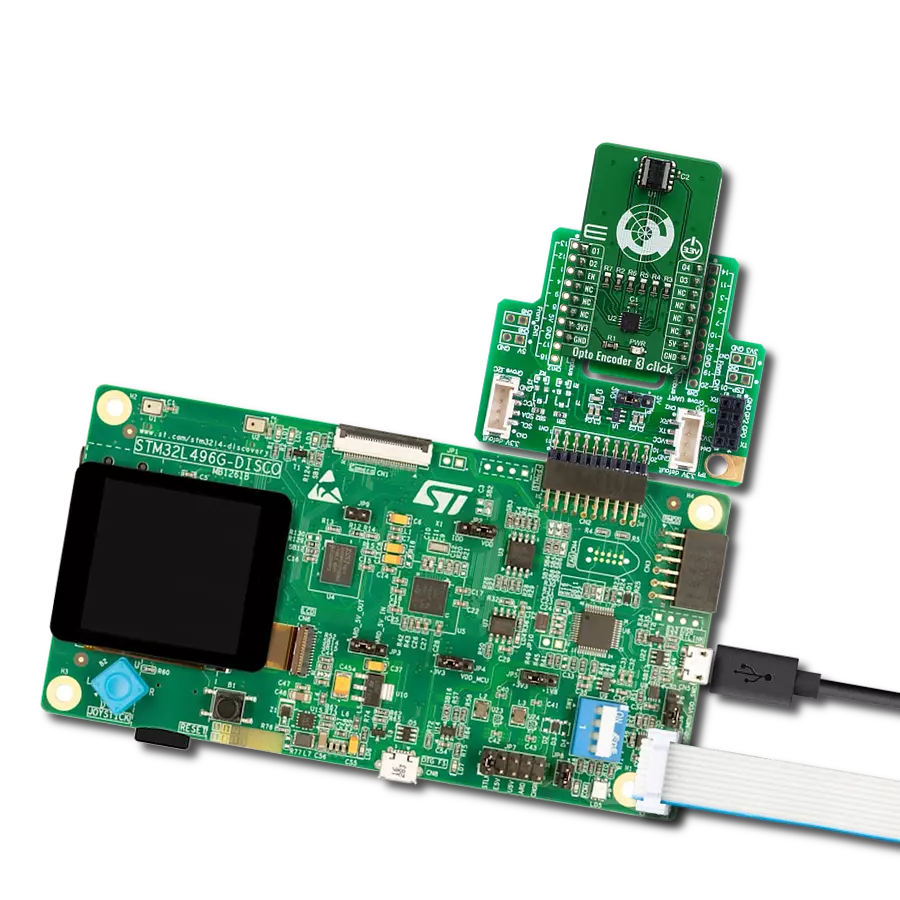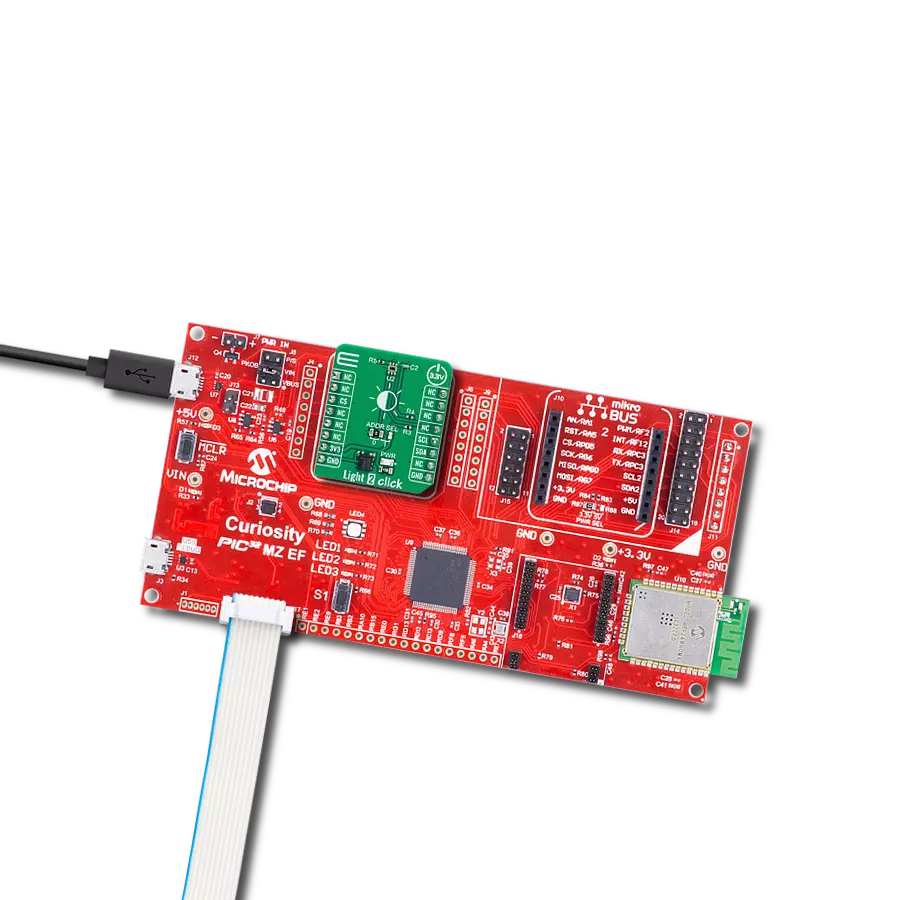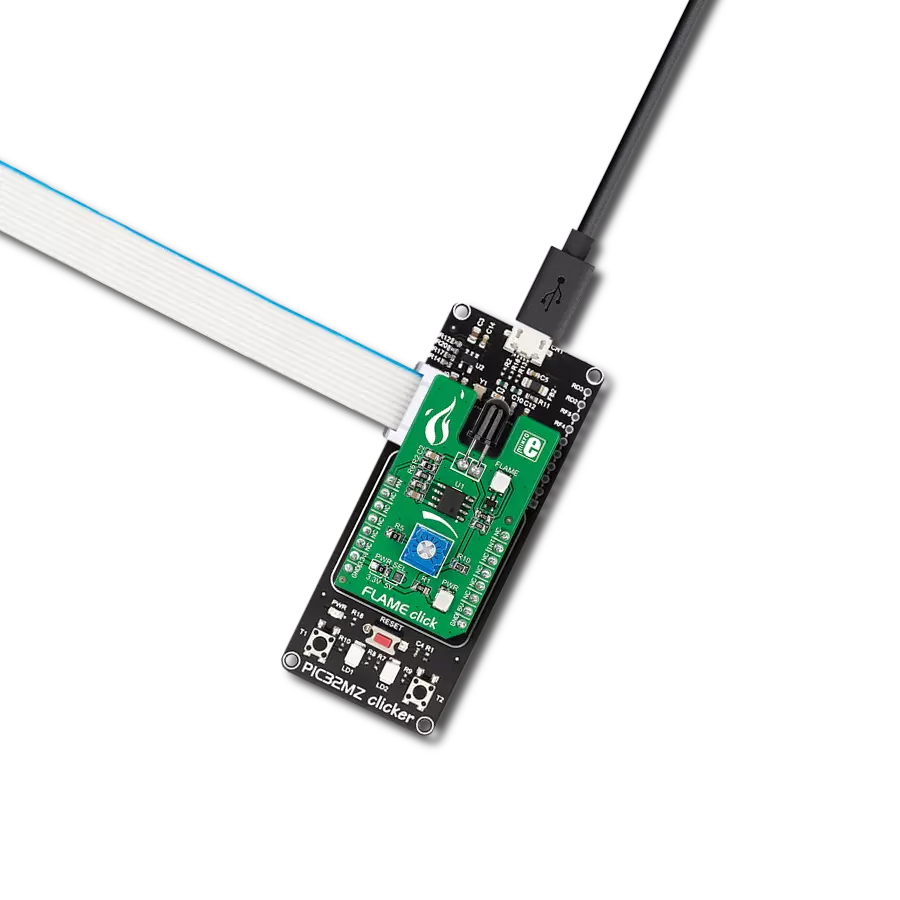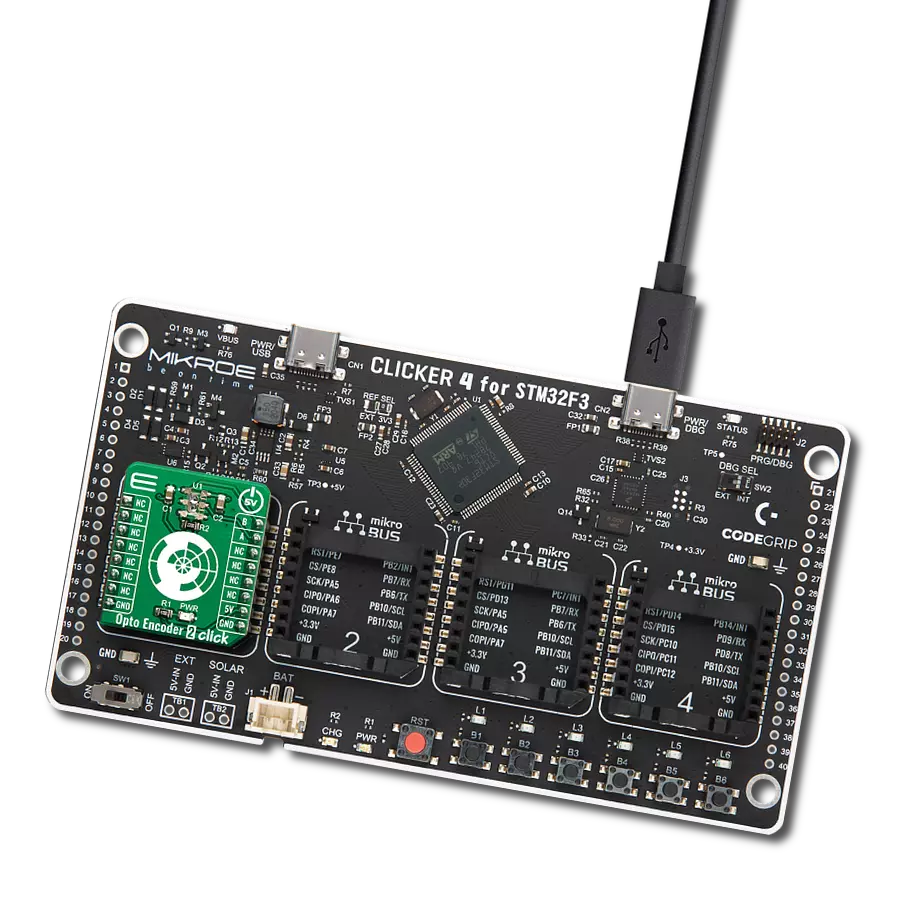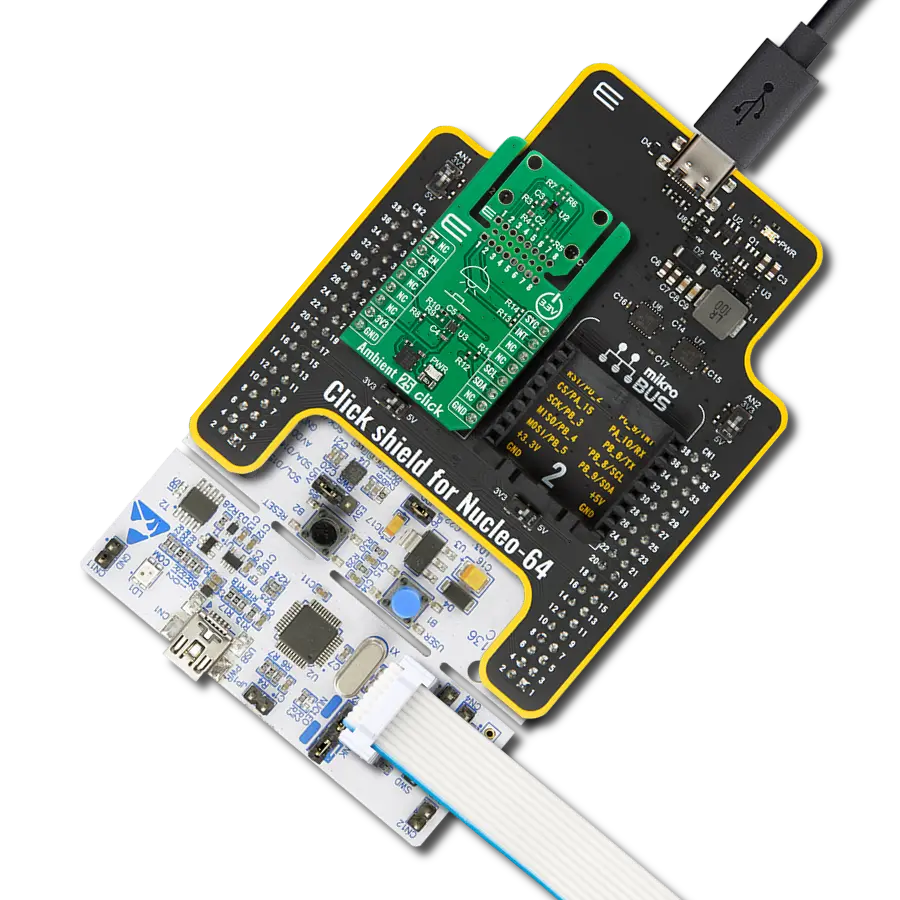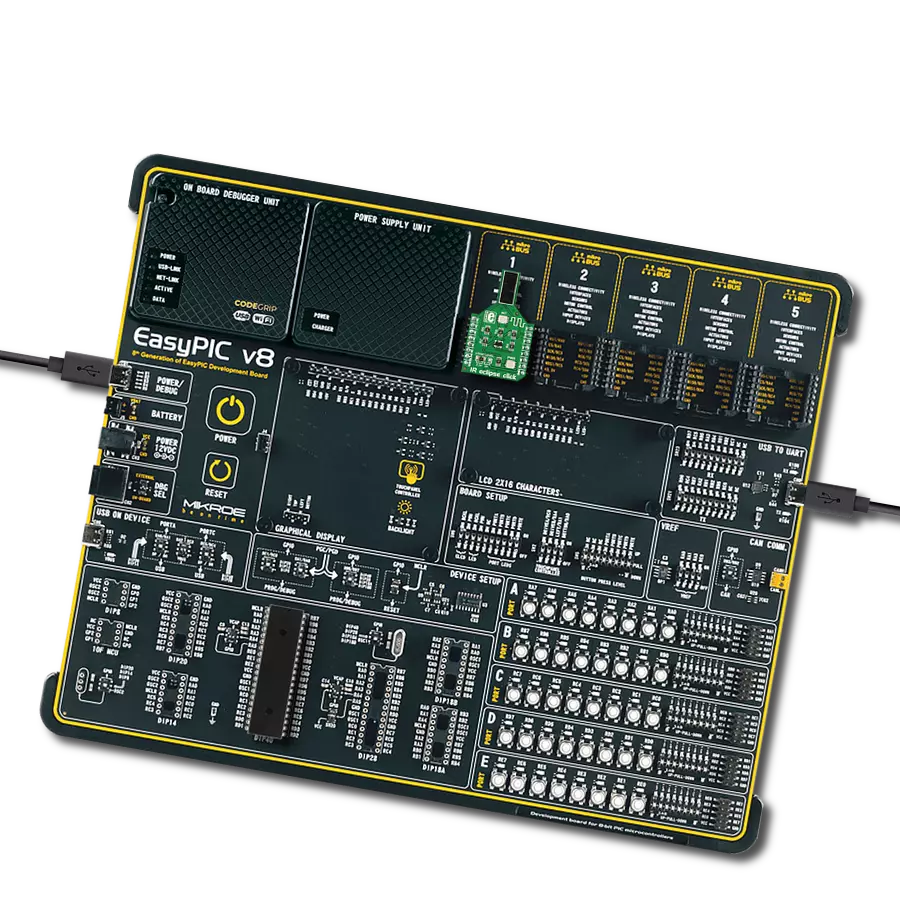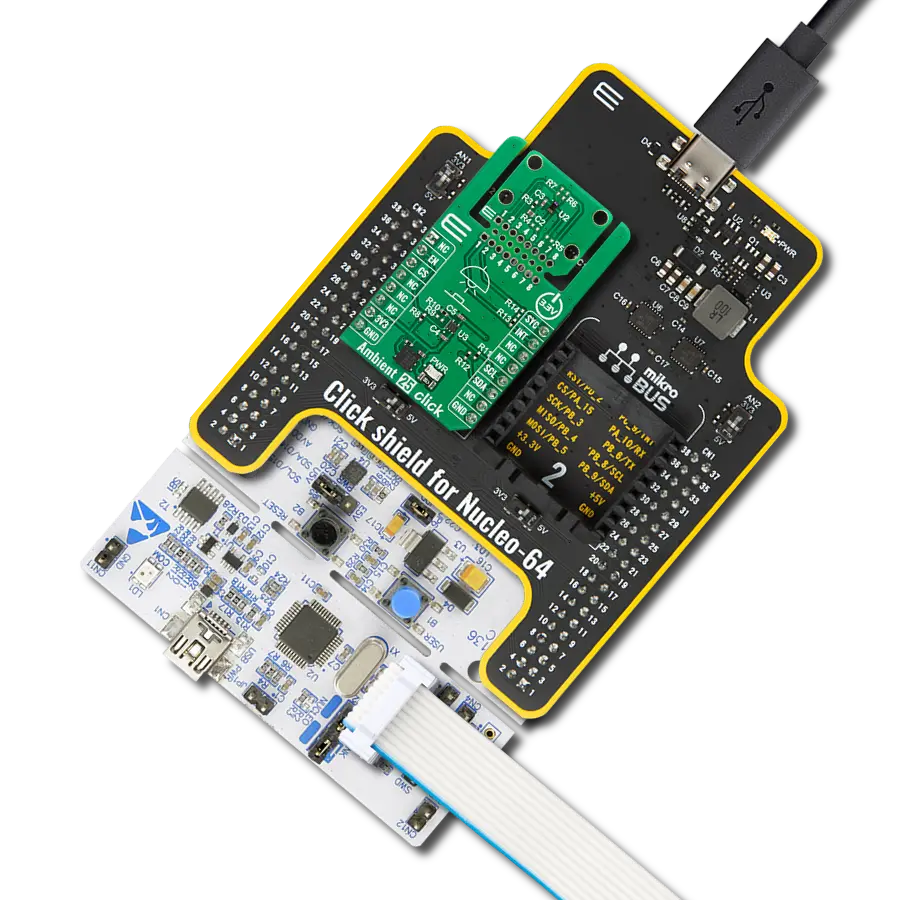Discover how our ambient light sensor solution brings a new level of intelligence to spaces, adapting lighting conditions for comfort, productivity, and energy conservation.
A
A
Hardware Overview
How does it work?
Ambient 2 Click is based on the OPT3001, a digital ambient light sensor with a high-precision human-eye response and excellent infrared rejection from Texas Instruments. The OPT3001 has a flexible and wide operating range for the ambient light sensor with a resolution of 0.01lux and full detectable illumination of 83865.6lux over a 23-bit effective dynamic range. Matching the sensor's spectral response to the human eye response is vital because ambient light sensors are used to measure and help create ideal human lighting experiences. This feature makes this Click board™ especially suitable for operation underneath visibly dark but infrared windows transmissive. The OPT3001 optical filtering system is not overly sensitive to non-ideal particles and micro-shadows on the optical surface, which results in the relatively minor device dependency
on uniform density optical illumination of the sensor area for infrared rejection. Proper optical surface cleanliness is always recommended for the best results on all optical devices. Ambient 2 Click communicates with MCU using the standard I2C 2-Wire interface with a maximum clock frequency of 2.6MHz, fully adjustable through software registers. The OPT3001 can be commanded to operate continuously or in single-shot measurement modes. Also, it can be configured into an automatic full-scale, range-setting mode that always selects the optimal full-scale range setting for the lighting conditions. This mode frees the user from having to program their software for potential iterative measurement cycles and readjustment of the full-scale range until optimal for any given measurement. Besides, the OPT3001 allows choosing its I2C slave address by
positioning the onboard SMD jumper labeled ADD to an appropriate position marked as GND, SCL, SDA, and VCC. Depending on the position of the jumper, four different slave addresses are available to the users. It also possesses an additional interrupt signal, routed on the INT pin of the mikroBUS™ socket labeled as INT, indicating when a specific interrupt event occurs, such as detecting a meaningful change in light intensity. This Click board™ can be operated only with a 3.3V logic voltage level. The board must perform appropriate logic voltage level conversion before using MCUs with different logic levels. Also, it comes equipped with a library containing functions and an example code that can be used as a reference for further development.
Features overview
Development board
PIC18F57Q43 Curiosity Nano evaluation kit is a cutting-edge hardware platform designed to evaluate microcontrollers within the PIC18-Q43 family. Central to its design is the inclusion of the powerful PIC18F57Q43 microcontroller (MCU), offering advanced functionalities and robust performance. Key features of this evaluation kit include a yellow user LED and a responsive
mechanical user switch, providing seamless interaction and testing. The provision for a 32.768kHz crystal footprint ensures precision timing capabilities. With an onboard debugger boasting a green power and status LED, programming and debugging become intuitive and efficient. Further enhancing its utility is the Virtual serial port (CDC) and a debug GPIO channel (DGI
GPIO), offering extensive connectivity options. Powered via USB, this kit boasts an adjustable target voltage feature facilitated by the MIC5353 LDO regulator, ensuring stable operation with an output voltage ranging from 1.8V to 5.1V, with a maximum output current of 500mA, subject to ambient temperature and voltage constraints.
Microcontroller Overview
MCU Card / MCU
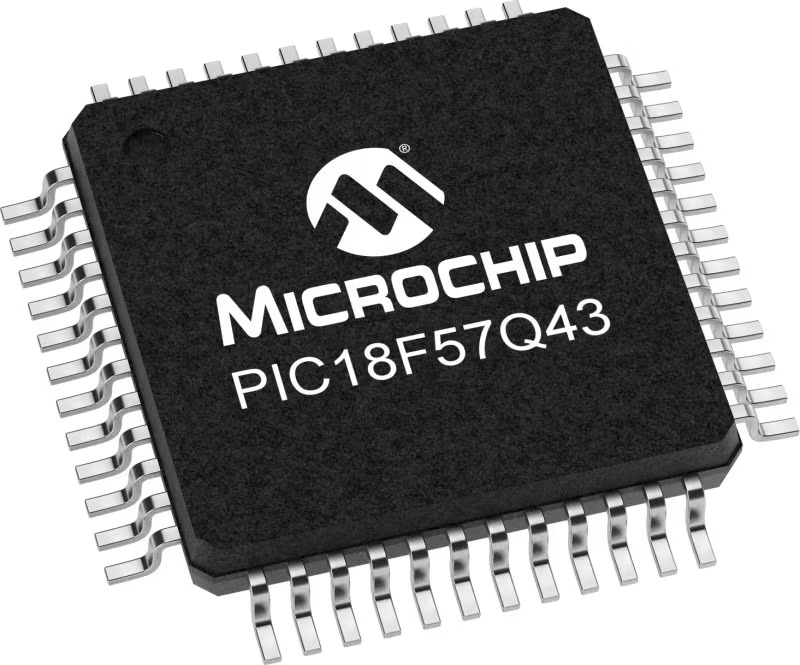
Architecture
PIC
MCU Memory (KB)
128
Silicon Vendor
Microchip
Pin count
48
RAM (Bytes)
8196
You complete me!
Accessories
Curiosity Nano Base for Click boards is a versatile hardware extension platform created to streamline the integration between Curiosity Nano kits and extension boards, tailored explicitly for the mikroBUS™-standardized Click boards and Xplained Pro extension boards. This innovative base board (shield) offers seamless connectivity and expansion possibilities, simplifying experimentation and development. Key features include USB power compatibility from the Curiosity Nano kit, alongside an alternative external power input option for enhanced flexibility. The onboard Li-Ion/LiPo charger and management circuit ensure smooth operation for battery-powered applications, simplifying usage and management. Moreover, the base incorporates a fixed 3.3V PSU dedicated to target and mikroBUS™ power rails, alongside a fixed 5.0V boost converter catering to 5V power rails of mikroBUS™ sockets, providing stable power delivery for various connected devices.
Used MCU Pins
mikroBUS™ mapper
Take a closer look
Click board™ Schematic

Step by step
Project assembly
Software Support
Library Description
This library contains API for Ambient 2 Click driver.
Key functions:
ambient2_generic_write- Generic Write functionambient2_generic_read- Generic Read functionambient2_get_sens_results- Sensor Results Read function.
Open Source
Code example
The complete application code and a ready-to-use project are available through the NECTO Studio Package Manager for direct installation in the NECTO Studio. The application code can also be found on the MIKROE GitHub account.
/*!
* \file main.c
* \brief Ambient2 Click example
*
* # Description
* This is a example which demonstrates the use of Ambient 2 Click board.
* This example measures and calculates abmient light from OPT3001 sensor.
*
* The demo application is composed of two sections :
*
* ## Application Init
* Initializes I2C driver and all used pins for Ambient 2 Click.
* Also executes a default configuration for this Click, which
* means that Click will work in continuous conversion mode, in automatic full
* scale range, with conversion time of 800ms.
*
* ## Application Task
* Reads sensor data every time when conversion cycle was done
* and data was ready for reading. Sends results to the uart terminal.
*
* \author Nemanja Medakovic
*
*/
// ------------------------------------------------------------------- INCLUDES
#include "board.h"
#include "log.h"
#include "ambient2.h"
// ------------------------------------------------------------------ VARIABLES
static ambient2_t ambient2;
static log_t console;
// ------------------------------------------------------ APPLICATION FUNCTIONS
void application_init( void )
{
ambient2_cfg_t ambient2_cfg;
log_cfg_t console_cfg;
// Click initialization.
ambient2_cfg_setup( &ambient2_cfg );
AMBIENT2_MAP_MIKROBUS( ambient2_cfg, MIKROBUS_1 );
ambient2_init( &ambient2, &ambient2_cfg );
ambient2_default_cfg( &ambient2 );
/**
* Logger initialization.
* Default baud rate: 115200
* Default log level: LOG_LEVEL_DEBUG
* @note If USB_UART_RX and USB_UART_TX
* are defined as HAL_PIN_NC, you will
* need to define them manually for log to work.
* See @b LOG_MAP_USB_UART macro definition for detailed explanation.
*/
LOG_MAP_USB_UART( console_cfg );
log_init( &console, &console_cfg );
log_printf( &console, "* * * Ambient 2 initialization done * * *\r\n" );
log_printf( &console, "*******************************************\r\n" );
}
void application_task( void )
{
if ( ambient2_generic_read( &ambient2, AMBIENT2_REG_CONFIGURATION ) & AMBIENT2_FLAG_MASK_CONV_READY )
{
ambient2_get_sens_results( &ambient2 );
log_printf( &console, "** Ambient Light Sensor : %.2f lux **\r\n", ambient2.sens_data.amb_light_lx );
log_printf( &console, "** Ambient Light Range : %.2f lux **\r\n", ambient2.sens_data.amb_light_range );
log_printf( &console, "** Ambient Light Percents : %d %% **\r\n\n", (int16_t)ambient2.sens_data.amb_light_per );
}
}
int main ( void )
{
/* Do not remove this line or clock might not be set correctly. */
#ifdef PREINIT_SUPPORTED
preinit();
#endif
application_init( );
for ( ; ; )
{
application_task( );
}
return 0;
}
// ------------------------------------------------------------------------ END
Additional Support
Resources
Category:Optical









